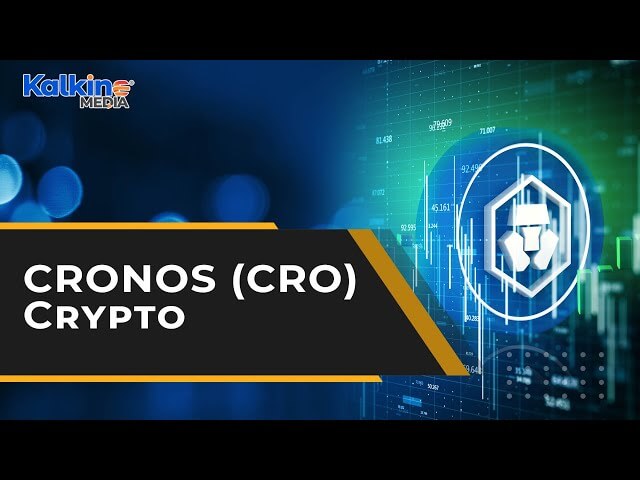Cronos (CRO)
The Utility Token at the Heart of the Crypto.com EcosystemCronos is critical to the functioning of one of the world's biggest Web3 ecosystems, encompassing crypto, NFTs, DeFi, gaming and more. In this guide, we’ll tell you everything you need to know about the Cronos network, including its blockchains and tokens.

What is Cronos (CRO)?
Cronos is an open-source, scalable, permissionless layer-1 Ethereum-compatible network built on Ethermint – which is itself based on the Cosmos SDK. It has been specifically designed to promote the growth of DeFi, NFTs, and Web3 gaming.
Originally developed by Monaco, the infrastructure includes a blockchain called Crypto.org Chain and the Cronos EVM Chain, plus a native utility token cryptocurrency. The crypto was originally known as MCO, but was changed to Crypto.org Coin (CRO) when the company rebranded as CRO ProtocolLabs – better known as Crypto.com. In February 2021, the coin rebranded again as Cronos (CRO).
Cronos and CRO provide Crypto.com with its own dedicated blockchain and cryptocurrency to power its ecosystem, which includes an exchange, payment services, DeFi, and NFTs. Although Cronos is based on decentralised technologies, it is actually run by a company, so it is in many ways centralised.
Cronos (CRO) Basics
Cronos Blockchain
One Cronos blockchain is called Crypto.org Chain, and was built with the Cosmos SDK, making it part of the Cosmos Network. There is also Cronos EVM, which is compatible with Ethereum Virtual Machine (EVM) and is powered by Etheremint. This allows users to import crypto, and port apps and smart contracts from Ethereum, Cosmos, and other chains.
Cronos (CRO) Staking
All blockchains built with Cosmos SDK, including Crypto.org Chain, use a proof-of-stake consensus mechanism. Parties can become validators by staking CRO tokens – for which they are rewarded with more CRO tokens.
Cronos (CRO) Supply and Tokenomics
CRO is non-mineable as all tokens were created when the blockchain launched. After 70 billion CRO were burned in 2021, the remaining total supply of CRO is limited to 30 billion tokens.
The supply of CRO is ring-fenced for five specific purposes as follows:
- 30% for secondary distribution and incentives
- 20% as a capital reserve
- 20% for network long-term incentives
- 20% for ecosystem grants
- 10% for community development
Cronos (CRO) Adoption & Usability
Of course, the primary adoption and uses of CRO take place within the Crypto.com ecosystem, where it is used for fees, staking, and rewards. There are many projects within the growing Cronos ecosystem. Crypto.com claimed to serve over 50 million users in November 2022.
Of course, CRO is also tradable in its own right on the secondary market. At the time of writing in late November 2022, according to CoinGecko, CRO was the 31st biggest cryptocurrency by market capitalization – at nearly $1.63 billion.
A small selection of projects available on Cronos:
| PROJECT NAME | CATEGORY | PROJECT NAME | CATEGORY |
| VVS Finance | Decentralised Exchange, Launchpad | Liquidus | Farm |
| Tectonic | Lending | Salem Finance | Farm |
| Cronos Bridge | Bridge | Zeus Finance | Farm |
| MM Finance | Decentralised Exchange, Launchpad | Cryptoshoujo | Gaming |
| CronaSwap | Decentralised Exchange, Launchpad | DeFi Degen Land | Gaming |
| Cronos Chimp Club | NFT | Bison Trails | Infrastructure |
| Multichain | Bridge | CosmoStation | Infrastructure |
| Beefy Finance | Yield Optimiser | DexPad | Launchpad |
| Crypto.com DeFi Wallet | Wallet | Agile Finance | Lending |
| Cronos Labs | Infrastructure | Annex Finance | Decentralised Exchange, Lending |
| ChronoSwap | Decentralised Exchange | Mimas Finance | Lending |
| Crodex | Decentralised Exchange, Launchpad | TheCronicle | News |
| Crosmonauts | NFT | Cronos News | News |
| ElkFinance | Decentralised Exchange | Agora | NFT |
| Crocos NFT | NFT | CRO Crow | NFT |
| KryptoDex | Decentralised Exchange | Empire Dex | Decentralised Exchange |
| KyberSwap | Decentralised Exchange | EvoDeFi | Bridge |
| PhotonSwap | Decentralised Exchange | CroPunks | NFT |
| SmolSwap | Decentralised Exchange | Ducky DeFi | Decentralised Exchange |
| StormSwap | Decentralised Exchange | EbisuBay | NFT |
| Swapp | Decentralised Exchange | Mad Meerkat | NFT |
| Firebird | Decentralised Exchange | Petite Planets | NFT |
| SupBirds | NFT | Adamant Finance | Yield Optimiser |
| Autofarm | Yield Optimiser | CroBlanc | Yield Optimiser |
| CROFarm | Yield Optimiser | Crystl Finance | Yield Optimiser |
| Kafe Finance | Yield Optimiser | Meso Finance | Yield Optimiser |
| Thetanuts | Options | IcyCRO | Others |
Cronos (CRO) Fees & Speed
According to Crypto.com, fees on the network amount to less than $1 per transaction. New blocks are created approximately every five seconds, with transactions taking 5-6 seconds to finalise.
Cronos Security and Safety
As previously explained, Cronos uses a proof-of-stake consensus mechanism across a large network. But, unlike truly decentralised networks, because Cronos is closely tied to a company (Crypto.com), there are additional things to consider when it comes to security.
On the one hand, a centralised company can provide certain protections, like insurance and customer support – both of which should put minds at rest. However, on the other hand, any project run by a centralised company has the potential to fail catastrophically, and very quickly, should that company hit trouble – as recently demonstrated by the collapse of FTX.
Security and safety tips:
- Don’t leave your CRO on-exchange for longer than absolutely necessary. If you are not currently trading, transfer them to a local wallet for short-term storage or staking.
- For long-term storage or staking, keep your crypto in a hardware wallet.
- Always keep your wallet keys in multiple safe places – they cannot be recovered.
- Never tell anyone about your crypto holdings. No matter how secure your storage is, if you or your loved ones are physically threatened, you’ll probably hand over your personal keys.
CRO Volatility
Like all cryptos, with the exception of stablecoins, CRO has experienced significant price volatility since launching. For example, on 8 February 2019, it was trading at just over $0.01 but by 24 November 2021 had hit nearly $0.97. However, at the time of writing, in late November 2022, it was trading at just over $0.06.
Final Word on Cronos (CRO)
Like other Web3 utility tokens, CRO is intrinsically tied to its ecosystem, in this case, Crypto.com. And, Crypto.com has serious ambitions – claiming it wants to be the one-stop crypto, DeFi, and Web3 gaming portal for billions of users. Of course, if it achieves this, CRO has a very bright future indeed. But, if Crypto.com goes the way of FTX, then CRO goes down with it.

